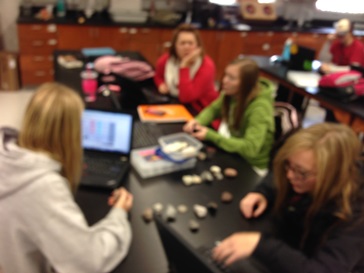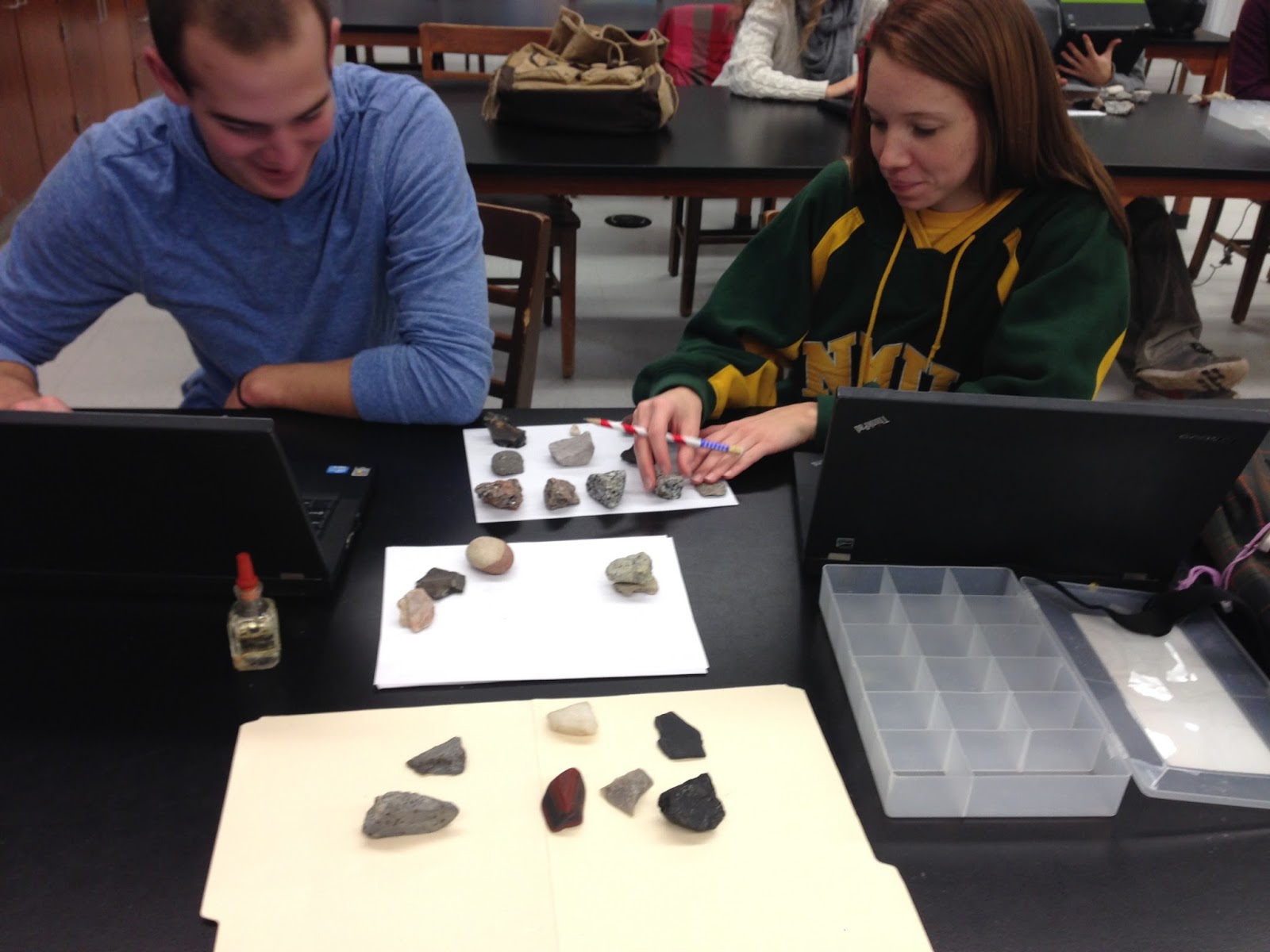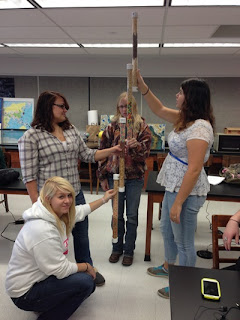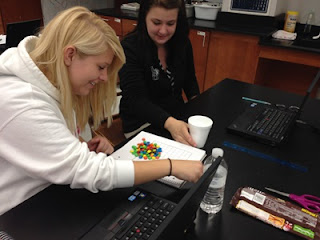This is a chronicle of teaching Earth System Science and Educational Technology at NMU. http://www.nmu.edu
Thursday, October 24, 2013
Monday, October 21, 2013
Crystal, Minerals, and Cookie Mining
Cookie Mining
The purpose of this activity is to give the player an introduction to the economics of mining. Each player buys "property," purchases the "mining equipment," pays for the "mining operation," and finally pays for the "reclamation." In return, the player receives money for the "ore mined." The object of the game is to develop the mine, safeguard the environment, and make as much money as possible.
Wednesday, October 16, 2013
Mineral Identification
Making your own rock candy is a fun and tasty way to grow crystals and see the structure of sugar on a big scale. Sugar crystals in granulated sugar display a monoclinic form, but you can see the shape much better in homegrown large crystals. This recipe is for rock candy that you can eat. You can color and flavor the candy, too.
Rock Candy Materials
Basically all you need to make rock candy is sugar and hot water. The color of your crystals will depend on the type of sugar you use (raw sugar is more golden and refined granulated sugar) and whether or not you add coloring. Any food-grade colorant will work.
- 3 cups sugar (sucrose)
- 1 cup water
- clean glass jar
- cotton string
- pencil or knife
- food coloring (optional)
- 1/2 tsp to 1 tsp flavoring oil or extract (optional)
- Lifesaver candy (optional)
- pan
- stove or microwave
Borax Crystals
These naturally clear crystals are easy to grow onto pipecleaner shapes. Choose a colored pipecleaner or add food coloring to get colored crystals. All you need to do to prepare the solution is pour boiling water into your container and stir in borax until no more will dissolve. An approximate recipe is:
- 3 tablespoons borax
- 1 cup boiling water
Epsom Salt Crystal Needles
These delicate crystal spikes grow in a cup in your refrigerator within a couple of hours, or sometimes more quickly. Simply mix together:
- 1/2 cup Epsom salt
- 1/2 cup very hot tap water
- food coloring (optional)
Copper Sulfate Crystals
Copper sulfate crystals naturally form blue diamonds. These crystals are extremely easy to grow. Simply dissolve copper sulfate into a cup of boiling water until no more will dissolve. Allow the container to rest undisturbed overnight. It's best to collect the crystals with a spoon or toothpick, since touching the solution will turn your skin blue and may cause irritation.
Sodium Chloride or Table Salt Crystals
This project works with any type of table salt, including iodized salt, rock salt and sea salt. Simply stir salt into boiling water until no more will dissolve. The solubility of salt is highly dependent on temperature, so hot tap water is not hot enough for this project. It's fine to boil the water on the stove while stirring in the salt. Allow the crystals to sit undisturbed. Depending on the concentration of your solution, the temperature and your humidity you can get crystals overnight or it may take a few days for them to form.
Chrome Alum Crystal
Chrome alum crystals are deep purple in color. Simply prepare the crystal growing solution and allow the crystals to form.
- 300 grams potassium chromium sulfate (chrome alum)
- 500 ml boiling water
Copper Acetate Monohydrate
Copper acetate monohydrate produces blue-green monoclinic crystals.
- 20 g copper acetate monohydrate
- 200 ml hot distilled water
Wednesday, October 9, 2013
Stratigraphic Correlation
Stratigraphic or Geologic ColumnStratigraphic columns are drawn with the oldest strata at the bottom and the youngest at the top. Unlike stratigraphic sections, stratigraphic columns also indicate the age of the various strata on the column. Geologic age is shown as labeled bars to the left of the column that span the units of the appropriate time intervals. Because stratigraphic columns, like stratigraphic sections, are scaled to strata thickness, the lengths of the time period bars on a geologic column are not scaled to time duration.
http://www.gg.uwyo.edu/content/lectureActivities/geologic_time/correlation/strat_column2.asp?color=&title=Geologic_Time&subTitle=A_Correlation_Exercise&taskNum=3&callNumber=12193&Worksheet=&AnswerKey=
- http://igs.indiana.edu/FossilsAndTime/using.cfm
- http://grandcanyonhistory.clas.asu.edu/history_science_geology.html
Subscribe to:
Comments (Atom)





























































